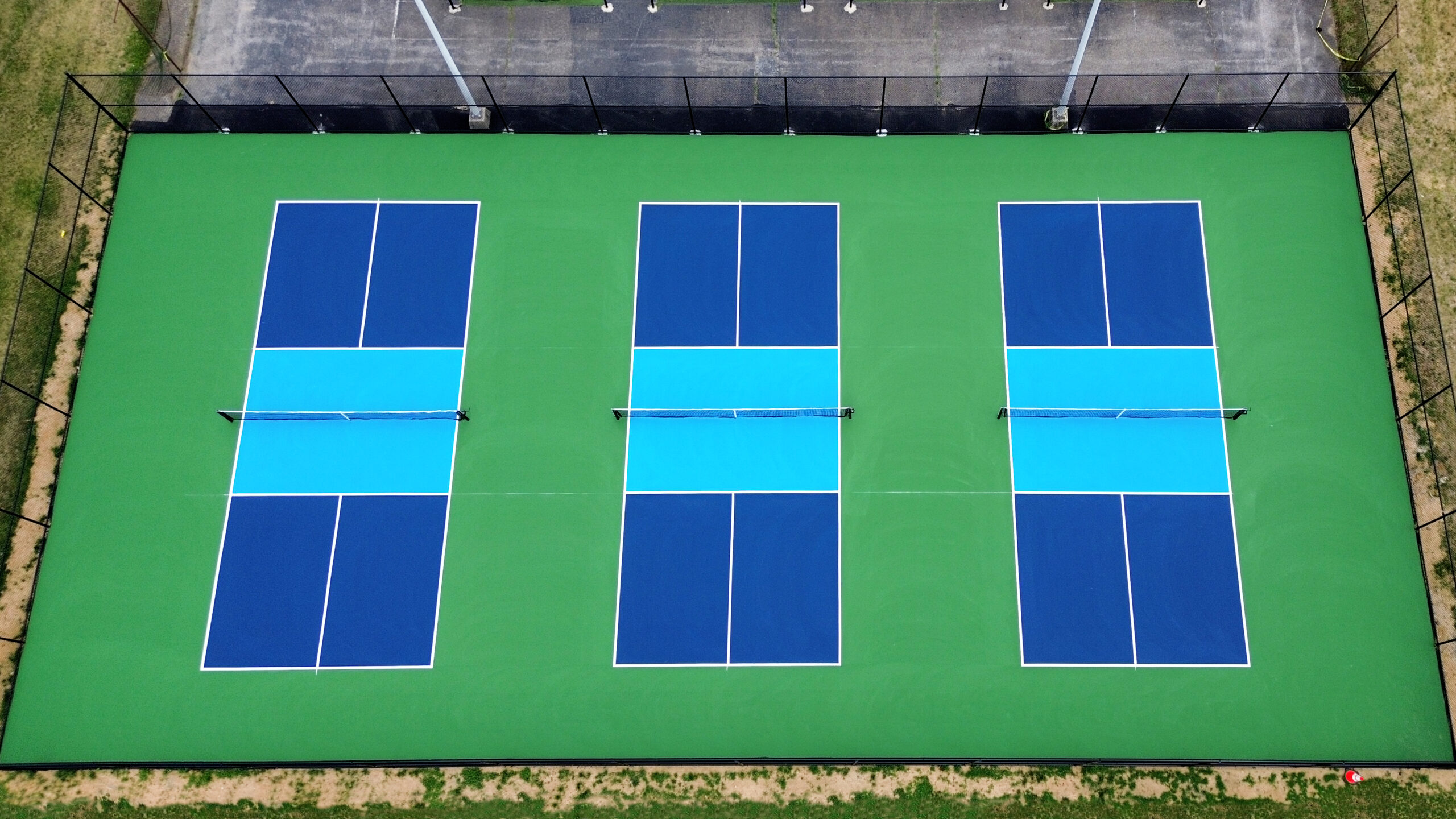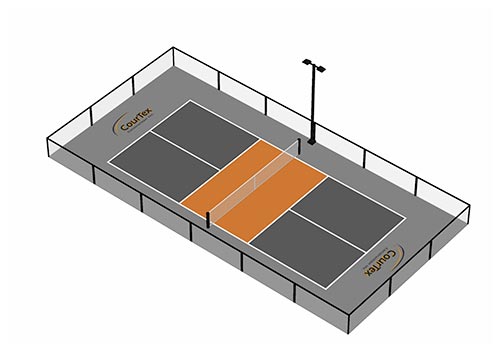Premium Pickleball Court Construction for Every Degree of Play
Premium Pickleball Court Construction for Every Degree of Play
Blog Article
Sustainable Practices in Pickleball Court Construction You Need To Know
As the popularity of pickleball proceeds to climb, so too does the requirement for lasting practices in court building. The influence of these practices extends far beyond the court itself.
Picking Eco-Friendly Products
Selecting green products is a vital action in the construction of sustainable pickleball courts. The choice of lasting products not just minimizes environmental effect however likewise improves the durability and performance of the court. Trick products include recycled rubber for the surface area, which offers outstanding resilience and shock absorption while diverting waste from garbage dumps.
Furthermore, using locally sourced materials decreases transportation emissions and supports local economic climates. Pickleball court construction. Using indigenous hardwoods for fencing and seats can give a lasting visual while making sure durability against the components.
Incorporating permeable materials for court foundations can even more add to sustainability by permitting all-natural water drain and minimizing overflow. These choices not just safeguard regional environments yet likewise advertise healthier play environments.
Reliable Water Drainage Solutions
While the selection of environmentally friendly materials is important, implementing efficient drain solutions is equally important for maintaining sustainable pickleball courts. Appropriate drainage not only safeguards the court surface from water damage however additionally decreases disintegration and drainage, advertising environmental stability.
Reliable water drainage systems can consist of absorptive paving, which permits water to penetrate the ground instead than pooling on the surface area. This lowers the likelihood of standing water, which can result in mold and various other upkeep problems. Furthermore, incorporating strategically positioned water drainage networks and swales can guide excess water away from the court area, guaranteeing a dry having fun surface area and preventing soil disintegration.
Making use of indigenous vegetation in the landscaping around the courts can even more boost water drainage by taking in excess water and reducing drainage. These plants need less irrigation and advertise biodiversity, aligning with lasting practices.
In addition, it is crucial to routinely keep the drainage system to guarantee its long-lasting effectiveness. This consists of cleaning debris and surveillance for obstructions. By prioritizing reliable drain solutions, pickleball court constructors can dramatically add to the sustainability and durability of the center, eventually profiting both gamers and the setting.
Energy-Efficient Lights Options
As the need for pickleball remains to grow, integrating energy-efficient illumination options into court layout has become significantly important for sustainability. Traditional lighting systems typically take in excessive power, adding to greater operational costs and environmental effect. Adopting modern-day, energy-efficient innovations is necessary for both new buildings and restorations.
LED (Light Emitting Diode) lights sticks out as a leading option because of its durability and power financial savings (Pickleball court construction). Compared to conventional lights, LEDs make use of around 75% much less energy and can last approximately 25 times longer, considerably reducing upkeep expenses. Additionally, the directional nature of LED lighting lessens light contamination, guaranteeing that illumination is concentrated on the court instead of surrounding locations.

Sustainable Surface Alternatives
Exploring sustainable surface area alternatives for pickleball courts has gotten traction among home builders and gamers alike. The focus on environment-friendly materials not just lines up with the expanding ecological understanding but likewise improves the performance and longevity of the courts.
This product supplies outstanding shock absorption, decreasing the risk of injuries for players while advertising sustainability. These ceramic tiles are easy to replace and install, and their versatility permits for different court setups.
Natural yard courts are likewise arising as a lasting option, advertising biodiversity and lowering the heat island impact. However, they need routine upkeep and water, which may not align with all sustainability objectives.

Water Preservation Strategies

An additional reliable method involves the setup of rainwater harvesting systems. These systems accumulate and save rain for use in maintaining court surface areas and landscaping. This strategy not only conserves safe and clean water however additionally lowers reliance on municipal resources.
Furthermore, employing drought-resistant landscape design around the courts is crucial. Indigenous plants require much less water and are better adapted to neighborhood climate problems, thus lowering total water usage. Additionally, making use of effective watering systems, such as drip watering, guarantees that water is delivered directly to plant roots, lessening dissipation and waste.
Conclusion
Integrating lasting techniques in pickleball court building substantially adds to environmental conservation and resource performance. Making use of eco-friendly materials, carrying out effective drain options, and embracing energy-efficient illumination options can significantly lower eco-friendly impact. Exploring sustainable surface alternatives and using water conservation methods enhance the overall sustainability of these recreational facilities. By focusing on these methods, the building of pickleball courts can line up with wider environmental objectives while advertising long life and performance within communities.
As the popularity of pickleball proceeds to increase, so too does the demand for lasting practices in court building and construction.Choosing green products is a critical action in the construction of sustainable pickleball courts. By prioritizing energy-efficient illumination alternatives, pickleball court builders can add to an extra sustainable future while meeting the needs of stakeholders and gamers alike.Incorporating click resources lasting surface area choices not just improves the performance of pickleball courts but also leads the means for applying reliable water preservation methods.Incorporating sustainable techniques in pickleball court building and construction significantly adds to ecological conservation and resource efficiency.
Report this page